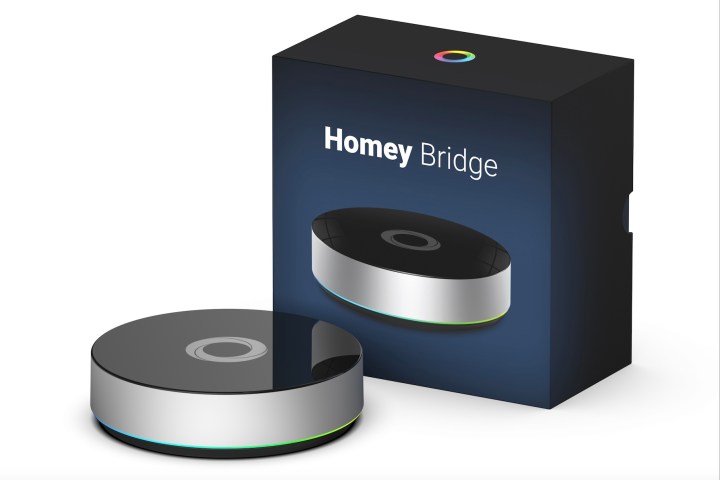Anyone who’s ever added smart home devices to their house knows you need to choose wisely, since some smart home gadgets don’t mix so well with certain digital assistant devices or some kinds of home hubs or bridges. There is a device, however, that aims to link disparate smart home gadgets and systems together and get them all working in sync, regardless of brand or technology. Meet Homey.

Homey also touts its system as privacy-first since there are no microphones inside the system and no Homey devices are listening to you.
Homey is billed as an easy-to-use, affordable smart home hub that will connect more than 50,000 different smart home devices from more than 1,000 brand and is built with six wireless technologies: Zigbee, Z-Wave Plus, Wi-Fi, Bluetooth, 433MHz, and Infrared. That should mean all your smart home devices can work together without navigating multiple apps and having different hubs, bridges, and connectors scattered around your home. Shipping now, Homey Bridge (which is the hub to all the other brands’ spokes) sells for about $69. The free version of the Homey app controls up to five devices, while the premium version lets you connect an unlimited number of smart devices for $3 per month.
Put simply, all your smart home gadgets — whether they’re Philips Hue, Google Nest, Ring, or Belkin — would connect to the Homey Bridge instead of their own hubs or bridges, which are themselves wireless beacons that link a smart device to your home’s Wi-Fi system.

Homey Flow is similar to IFTTT in that it lets you create a series of automated rules that tie disparate devices together, no matter which brand or technology. For example, the company says you can “always dim lights in the bedroom when the drapes close” or “automatically turn the thermostat down, turn off the lights and enable the alarm when I lock the front door.” Flows can also be started using voice assistants, such as Google, Alexa, and Siri Shortcuts, and via widgets for mobile and Apple Watch. (How this ties into the promise of “we’re not listening to you” seems like a bit of a disconnect since, to use this feature, you do need another device that is listening to you. But. technically, it’s not Homey listening …)
Homey Insights provides smart home analysis via simple graphs and charts. For example, users can track trends such as the temperature levels of their homes and thermostat over time, how much energy their refrigerator uses in summer compared to winter, or how much energy the washing machine uses on hot versus warm wash cycles, and which rooms and devices use the most electricity.
The promise of a single bridge and a single app is enticing, since it means you can pick up smart home lighting, thermostats, speakers, and more and have them all work together.



